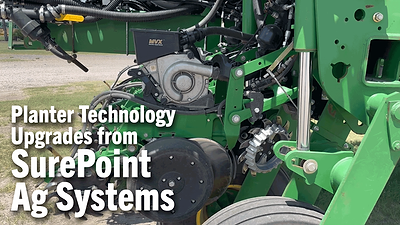Most dealer-principals and their salespeople use cell phones to speed up their communications and for customer convenience. But, what about cell phones for others in the dealership such as the service techs and the parts people?
This column is the first since we changed our focus to using technology in the dealership to improve the bottom-line results. Our discussion in this issue centers on how “smart” cell phones are used in the more progressive farm equipment dealerships to increase productivity, performance and profits.
So, what is a “smart phone” anyway? For our purposes, we’ll define a smart phone as one with a range of capabilities, ranging from Internet access to texting, taking photos and making videos. Examples include iPhones, BlackBerries or any of the many Android models available.
If you aren’t using a smart phone, you need to realize you’re a step or two behind many of your customers — especially the younger ones. And, you shouldn’t be surprised if even your veteran farmers aren’t taking advantage of cutting-edge communication tools for following commodity markets and weather, if nothing else. Extending the use of communication to smart phones has been a natural evolution.
In the following, we’ll look at how smart phone technology can be, and in many cases is already, being utilized to improve the productivity and profitability in each department in your dealership — sales, service and parts.
Service Department — Profit Driver: 85% or Better Application Rate
How Technology is used: Smart phone or video recording for machine service quoting.
While working on machinery on location, service technicians use their phone or recorder to walk around the machine and video the condition of the machine, noting other service work that could also be done in the future. This can take as little as 30 seconds and should include a voice-over recording of what the technicians is observing.
Upon returning to the dealership, the video is downloaded and posted online (YouTube or other video site) allowing the farmer to view it if he chooses. The service manager, service writer or tech then prepares a professional quote for the additional work, and emails it to the farmer or contractor along with the link to the video.
Results: The close rate for quotes with a video more than doubles.
The farmer or contractor not only sees his own machine, but he hears the voice of the technician as he explains what should or could be done. Service techs have the most credibility with customers, and seeing and hearing what he says can have a big impact. On larger operations, the decision makers may not be as close to the condition of the machines and this approach helps them to see the opportunities in detail.
This approach also allows others who may be on the farm to video machines, whether sales reps, parts and service marketing and salespeople or service manager. It also means the technician could take the opportunity — and to be incentivized to do so — to video other machines while on the farm.
How the Technology Drives Profits: A key to improving productivity in the service department is to make sure the manager always has a log of service work that can be scheduled to keep techs working. His job is to make sure there is always work in front of his people.
This use of technology generates quotes for additional service work, improves the close rate for those quotes and adds more discretionary work that can be scheduled by the service manager to maintain the technicians productivity at a high level.
Parts Department — Profit Driver: Parts Manager Productivity (sales per parts person) and Customer Satisfaction
How Technology is used: Texting between parts department and customers.
Cell phones, and especially smart phones, are used to send text messages back and forth between customers and the dealership. We’ve seen parts managers who use their phones to tell customers when parts on order have arrived. This could be a simple text such as “Your parts have arrived” or it could include the actual part numbers.
Some customers use the texting capability to inquire about parts. If they know that the parts manager or parts counter people receives and sends texts, they will text from the field.
Results: Parts managers who text regularly tell us that compared to making phone calls, they spend less time communicating because they don’t have to waste time playing phone tag. Once they text, their task is pretty much done, though they need to ensure the text was received and hopefully acknowledged.
When used effectively, texting is convenient, saves time and improves communication. The actual text is in a written form so there is a record that can be read when it’s most convenient.
Some customers prefer a text instead of a phone call or an email. The text doesn’t have to be answered or viewed right away. If the customer is busy, they don’t have to interrupt what they are doing and can check on it at any time.
How the Technology Drives Profits: For most parts departments, time is their most valuable resource. During the busy seasons when timing is absolutely critical, any savings helps improve productivity. The approach described here also helps improve the accuracy of communication because there is a written record.
The benefit for a dealer-principal is that the increased productivity should allow more sales per parts person.
Sales Department — Profit Driver: Increased Close Rate, Higher Gross Margin
How Technology is used: Playback of videos that show machine features.
Dealers are using videos to help sell equipment and demonstrate how to use machine features. These videos are either produced by the manufacturers or by the dealerships using smart phones or small video cameras.
The use of advanced technology on the newest machines means that many customers need to learn how to make the technology work best for them to optimize their productivity.
Results: This approach improves the effectiveness of the sales call. It also helps with the orientation of the customer to the machine upon delivery.
How the Technology Drives Profits: The benefit is improved close rate for sales as well as a better image for the dealership.
These examples of using smart phone capabilities to enhance the performance of each department in your dealership should stimulate your thinking about the application of technology to improve your overall business performance. We’re interested to know how you are implementing these and other ideas. Please e-mail me at GRussell@CurrieManagement.com or Dave Kanicki at dkanicki@lesspub.com.






